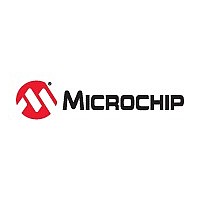PIC12F635-I/MD Microchip Technology, PIC12F635-I/MD Datasheet - Page 100

PIC12F635-I/MD
Manufacturer Part Number
PIC12F635-I/MD
Description
IC PIC MCU FLASH 1KX14 8DFN
Manufacturer
Microchip Technology
Series
PIC® 12Fr
Specifications of PIC12F635-I/MD
Core Size
8-Bit
Program Memory Size
1.75KB (1K x 14)
Core Processor
PIC
Speed
20MHz
Peripherals
Brown-out Detect/Reset, POR, WDT
Number Of I /o
5
Program Memory Type
FLASH
Eeprom Size
128 x 8
Ram Size
64 x 8
Voltage - Supply (vcc/vdd)
2 V ~ 5.5 V
Oscillator Type
Internal
Operating Temperature
-40°C ~ 85°C
Package / Case
8-DFN
Controller Family/series
PIC12
No. Of I/o's
6
Eeprom Memory Size
128Byte
Ram Memory Size
64Byte
Cpu Speed
20MHz
No. Of Timers
2
Lead Free Status / RoHS Status
Lead free / RoHS Compliant
For Use With
AC164326 - MODULA SKT PM3 20QFNXLT08DFN2 - SOCKET TRANSITION ICE 14DIP/8DFNAC162057 - MPLAB ICD 2 HEADER 14DIPXLT08DFN - SOCKET TRANSITION ICE 8DFN
Data Converters
-
Connectivity
-
Lead Free Status / RoHS Status
Lead free / RoHS Compliant, Lead free / RoHS Compliant
Available stocks
Company
Part Number
Manufacturer
Quantity
Price
- Current page: 100 of 234
- Download datasheet (4Mb)
PIC12F635/PIC16F636/639
11.6
The AGC controls the variable attenuator to limit the
internal signal voltage to avoid saturation of internal
amplifiers and demodulators (Refer to Section 11.4
“Variable Attenuator”).
The signal levels from all 3 channels are combined
such that AGC attenuates all 3 channels uniformly in
respect to the channel with the strongest signal.
11.7
FGA1 and FGA2 provides a maximum two-stage gain
of 40 dB.
11.8
The Auto Channel Selection feature is enabled if the
Auto Channel Select bit AUTOCHSEL<8> in Configu-
ration Register 5 (Register 11-6) is set, and disabled if
the bit is cleared. When this feature is active (i.e.,
AUTOCHSE <8> = 1), the control circuit checks the
demodulator output of each input channel immediately
after the AGC settling time (T
it allows this channel to pass data, otherwise it is
blocked.
The status of this operation is monitored by AFE Status
Register 7 bits <8:6> (Register 11-8). These bits indicate
the current status of the channel selection activity, and
automatically updates for every Soft Reset period. The
auto channel selection function resets after each Soft
Reset (or after Inactivity timer time-out). Therefore, the
blocked channels are reenabled after Soft Reset.
This feature can make the output signal cleaner by
blocking any channel that was not high at the end of
T
output, and is not applied for carrier clock or RSSI
output.
11.9
The Detector senses the input carrier cycles. The
output of the Detector switches digitally at the signal
carrier frequency. Carrier clock output is available
when the output is selected by the DATOUT bit in the
AFE Configuration Register 1 (Register 11-2).
DS41232D-page 98
AGC
Note:
Note:
. This function works only for demodulated data
AGC Control
Fixed Gain Amplifiers 1 and 2
Auto Channel Selection
Carrier Clock Detector
The AGC control function is accomplished
by the device itself. The user cannot
control its function.
The user cannot control the gain of these
two amplifiers.
STAB
). If the output is high,
11.10 Demodulator
The Demodulator consists of a full-wave rectifier, low
pass filter, peak detector and Data Slicer that detects
the envelope of the input signal.
11.11 Data Slicer
The Data Slicer consists of a reference generator and
comparator. The Data Slicer compares the input with
the reference voltage. The reference voltage comes
from the minimum modulation depth requirement
setting and input peak voltage. The data from all 3
channels are OR’d together and sent to the output
enable filter.
11.12 Output Enable Filter
The Output Enable Filter enables the LFDATA output
once the incoming signal meets the wake-up sequence
requirements
Output Enable Filter”).
11.13 RSSI (Received Signal Strength
The RSSI provides a current which is proportional to the
input signal amplitude (see Section 11.31.3 “Received
Signal Strength Indicator (RSSI) Output”).
11.14 Analog Front-End Timers
The AFE has an internal 32 kHz RC oscillator. The
oscillator is used in several timers:
• Inactivity timer
• Alarm timer
• Pulse Width timer
• Period timer
• AGC settling timer
11.14.1
The RC oscillator is low power, 32 kHz ± 10% over
temperature and voltage variations.
Indicator)
RC OSCILLATOR
(see
Section 11.15
© 2007 Microchip Technology Inc.
“Configurable
Related parts for PIC12F635-I/MD
Image
Part Number
Description
Manufacturer
Datasheet
Request
R

Part Number:
Description:
IC MCU FLASH 1KX14 8SOIC
Manufacturer:
Microchip Technology
Datasheet:

Part Number:
Description:
IC MCU FLASH 1KX14 8DIP
Manufacturer:
Microchip Technology
Datasheet:

Part Number:
Description:
8/14-Pin, Flash-Based 8-Bit CMOS Microcontrollers with nanoWatt Technology
Manufacturer:
MICROCHIP [Microchip Technology]
Datasheet:

Part Number:
Description:
IC MCU FLASH 1KX14 8DIP
Manufacturer:
Microchip Technology
Datasheet:

Part Number:
Description:
IC MCU FLASH 1KX14 8DFN
Manufacturer:
Microchip Technology
Datasheet:

Part Number:
Description:
IC MCU FLASH 1KX14 8DFN
Manufacturer:
Microchip Technology
Datasheet:

Part Number:
Description:
IC,MICROCONTROLLER,8-BIT,PIC CPU,CMOS,SOP,8PIN,PLASTIC
Manufacturer:
Microchip Technology
Datasheet:

Part Number:
Description:
(PIC12F635 / PIC12F636 / PIC12F639) 8/14-PIN FLASH-BASED / 8-BIT CMOS MICROCONTROLLERS WITH NANOWATT TECHNOLOGY
Manufacturer:
Microchip Technology
Datasheet:

Part Number:
Description:
7 KB Flash, 256 Bytes RAM, 32 MHz Int. Osc, 6 I/0, Enhanced Mid Range Core 8 PDI
Manufacturer:
Microchip Technology
Datasheet:

Part Number:
Description:
7 KB Flash, 256 Bytes RAM, 32 MHz Int. Osc, 6 I/0, Enhanced Mid Range Core, Nano
Manufacturer:
Microchip Technology
Datasheet:

Part Number:
Description:
7 KB Flash, 256 Bytes RAM, 32 MHz Int. Osc, 6 I/0, Enhanced Mid Range Core 8 DFN
Manufacturer:
Microchip Technology

Part Number:
Description:
7 KB Flash, 256 Bytes RAM, 32 MHz Int. Osc, 6 I/0, Enhanced Mid Range Core 8 SOI
Manufacturer:
Microchip Technology

Part Number:
Description:
7 KB Flash, 256 Bytes RAM, 32 MHz Int. Osc, 6 I/0, Enhanced Mid Range Core, Nano
Manufacturer:
Microchip Technology
Datasheet:

Part Number:
Description:
7 KB Flash, 256 Bytes RAM, 32 MHz Int. Osc, 6 I/0, Enhanced Mid Range Core, Nano
Manufacturer:
Microchip Technology
Datasheet:

Part Number:
Description:
7 KB Flash, 256 Bytes RAM, 32 MHz Int. Osc, 6 I/0, Enhanced Mid Range Core, Nano
Manufacturer:
Microchip Technology
Datasheet:











